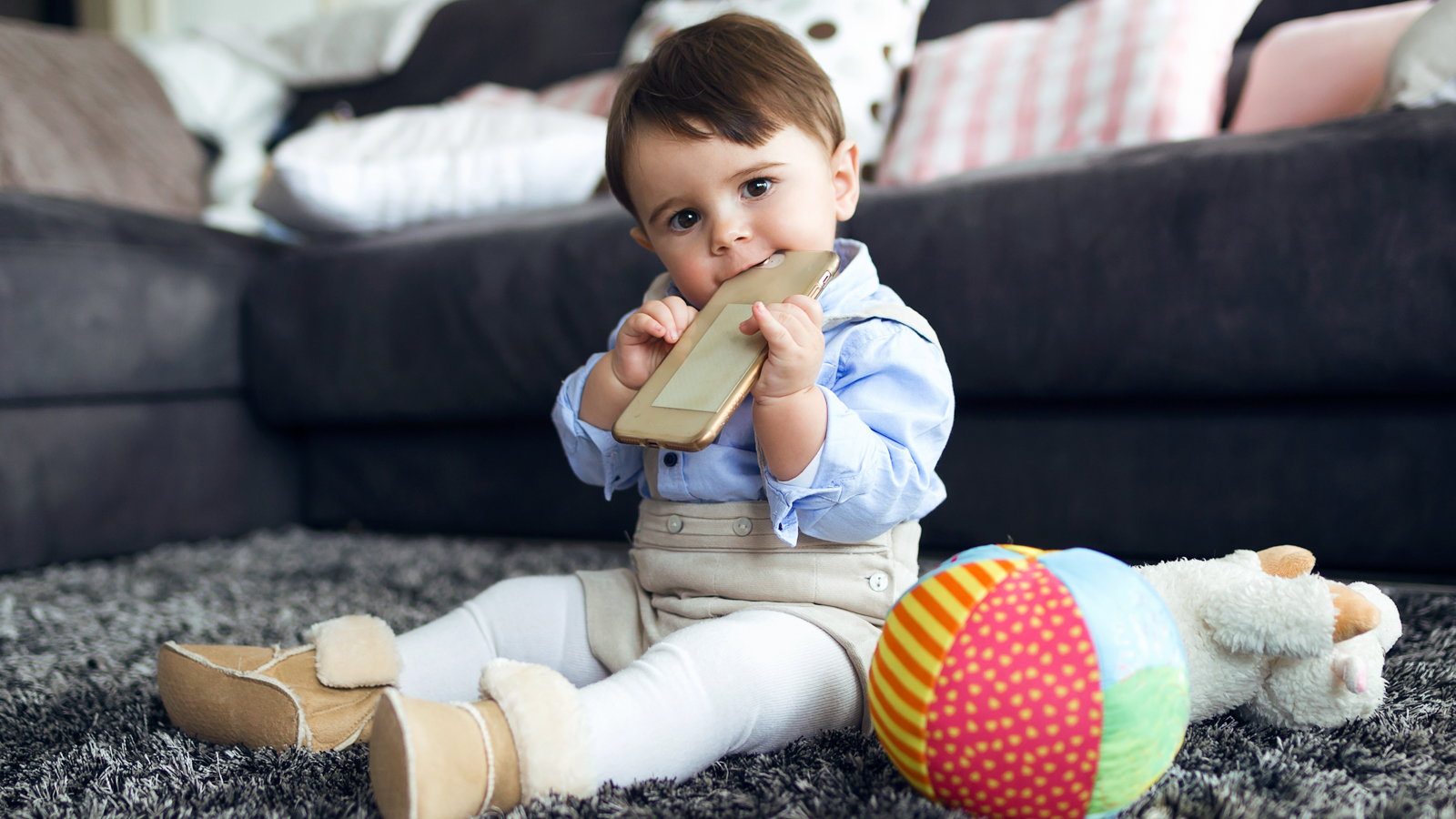
A worried mother asks, “Today at our play group my son BIT my friend’s daughter! My friend acted like it was a normal childhood problem, and told me not to worry about it, but I’m horrified! Why did my son do this? How can I prevent it from happening again?”
Learn About It
Your friend has obviously had some experience with toddlers, and she knows that biting a playmate is common in this age group (perhaps her daughter has already been on the other side of the action). Toddlers don’t have the words to describe their emotions, they don’t quite know how to control their feelings, and they don’t have any concept of hurting another person. When a toddler bites a friend, it most likely isn’t an act of aggression: It is simply an immature way of trying to get a point across, experimentation with cause and effect, or playfulness gone awry.

What Not To Do About Biting
Many parents respond emotionally when their toddler uses his teeth on another human being; their immediate response is anger, followed by punishment. This is because we view the act from an adult perspective. However, if we can understand that a toddler bite is most likely a responsive reflex, we can avoid responding in the following typical, yet unnecessary and ineffective ways:
- Don’t bite your child back to “show him how it feels.” He isn’t purposefully hurting his playmate. He doesn’t understand that what he did is wrong, so by responding with the same action, you may actually be reinforcing that this is acceptable behavior, or confusing him entirely.
- Don’t assume that your child is willfully misbehaving. The ways that you’ll treat these behaviors in an older child, who understands that biting is wrong, will be different than how you will approach this with a toddler.
- Don’t yell at your toddler. This will do nothing more than scare her; it won’t teach her anything about what she’s just done.
What To Do About Biting
When you understand that your child’s actions are normal and that they aren’t intentional misbehavior, you will be able to take the right steps to teach her how to communicate her anger and frustration. This takes time, and she’ll need more than one lesson. Here’s how to teach your child not to bite:

Watch and intercept
As you become familiar with your toddler’s actions, you may be able to stop a bite even before it even occurs. If you see that your child is getting frustrated or angry – perhaps in the middle of a tussle over a toy – step in and redirect her attention to something else.
Teach
Immediately after your toddler bites another child, look her in the eye and tell her in one or two short sentences what you want her to know, such as, “Biting hurts. We don’t bite. Give Emmy a hug now. That will make her feel better.” Then, give your child a few hints on how she should handle her frustration next time, like “If you want a toy, you can ask for it or come to Mommy for help.”
Avoid playful biting
Nibbling your little one’s toes or playfully nipping his fingers sends a mixed message to your child. A little one won’t understand when biting another person is okay and when it’s not, nor is she able to judge the pressure she’s putting into the bite. As she gets a little older, she will start to understand that some things can be done carefully and gently in play, but not in anger. This takes a little more maturity to understand, more than you can expect your toddler to have at her young age.
Give more attention to the injured child
Typically, we put all our energy into correcting the biter’s actions and we don’t give the child who was bitten any consolation. Soothing the child who was bitten can show your child that his actions caused another child fear or pain. You can even encourage your child to help soothe his friend.
The repeat offender
If you’ve gone through the above steps, and then your child bites again, you can respond with a little more intensity. If you catch him in the act, immediately go to him. Take him by the shoulders, look him in the eye, and firmly announce, “No biting: time-out.” Direct him to a chair and have him sit for a minute or two. It doesn’t take very long for your message to sink in. (And, with a toddler, a longer time-out can dilute the message as he may actually forget why he’s sitting there!) If you miss the action but are told about it later, you can have a talk with your child about what happened. Limit yourself to a few brief, specific comments, as a lengthy lecture is almost never effective. A child who bites a playmate more than once may need more guidance on how to handle frustration and anger. Reading toddler books on the topic, role-playing, and demonstration of appropriate actions can all help your child learn how to respond to his own emotions in socially appropriate ways.
First aid
Although the risk of injury from a toddler's bite is small, it’s good to know what to do in case of a bite that breaks through the skin:
- Calm and reassure the child who was bitten.
- Wash your hands with soap and water.
- Wash the wound with mild soap and water.
- Cover the injury with a bandage.
- If the bite is actively bleeding, control the bleeding by applying direct pressure with a clean, dry cloth.
- Call your pediatrician for advice.
This article is a copyrighted excerpt from Gentle Toddler Care by Elizabeth Pantley. (McGraw-Hill, 2006
